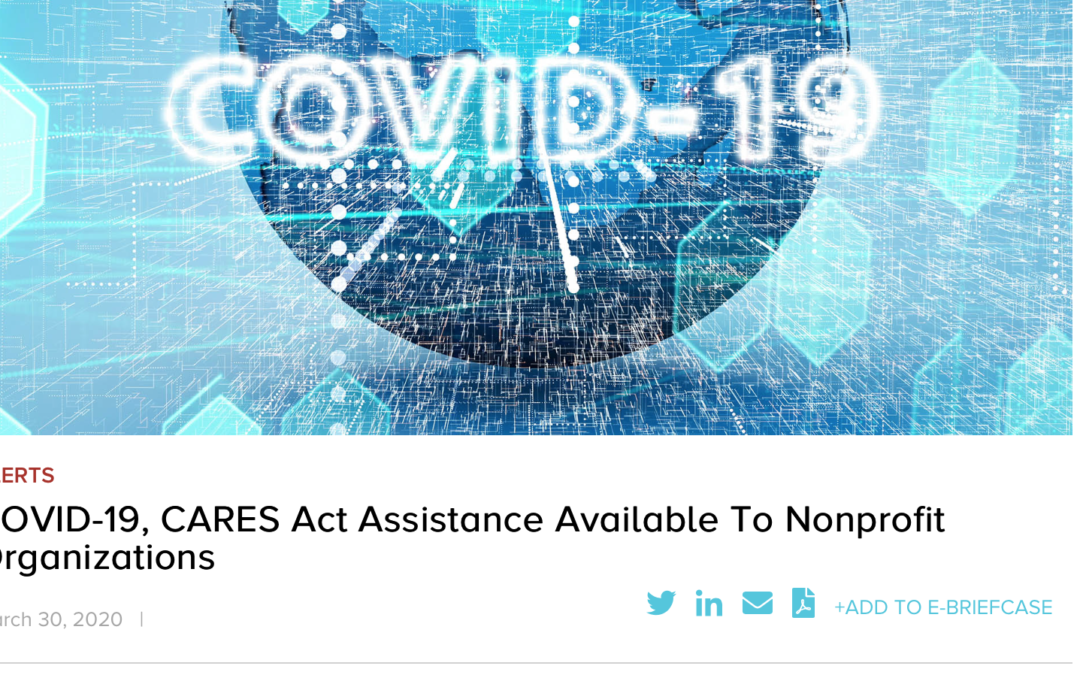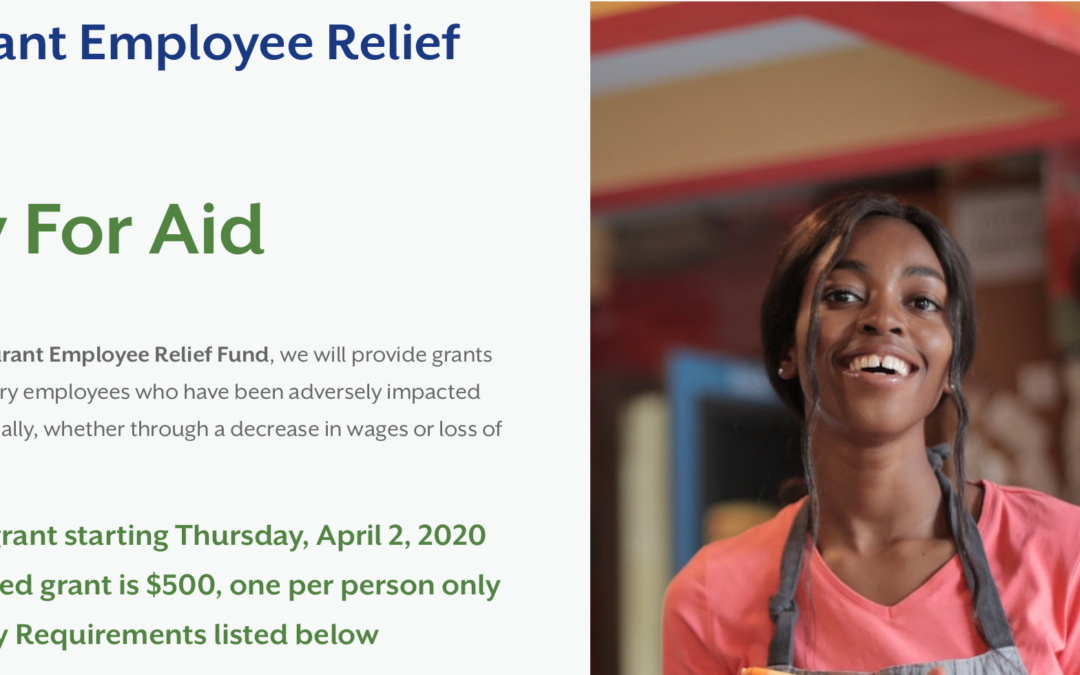by Media | May 15, 2020 | Church Benevolence, Churches, Nonprofits, Relief Funds |
Let me preface this by stating that I’m going to make a few assumptions in my following statements.
At Christ Chapel, we’ve experienced an marked increase in requests from congregants and community members needing financial assistance. In my conversations with nonprofits and others, I think we’ll see a major increase in Benevolence requests at the beginning of June. Right now, we’re experiencing the “calm before the storm”.
- June is the point when most people will have spent all of their stimulus and other government assistance.
- We are beginning to see some people maxing out their credit cards in order to pay their bills who wouldn’t normally use debt to pay bills.
- June will also be about the time that many landlords and lenders will end their grace periods.
All of these culminating factors create a ‘Perfect Storm’ for a large segment of the population. Many have never needed to ask for financial assistance from their church. In fact, many don’t know where to get help. This is an opportunity for ministry.
We (Christ Chapel) are preparing for a 10X increase by mid-June that could continue until the end of September (Q3 2020). That means if we see 6 Benevolence clients per week on average (pre-COVID19), we are preparing for 60 clients per week for a 16 week period (960 clients total). Those numbers are astronomical. However, behind every number is a life, a dream and a story that WE (the Body of Christ) get to step into. What a privilege!
My encouragement to ALL of us is to begin praying, creating and adjusting our benevolence plans, building up benevolence funds (storehouses) and collaborating with our nonprofit partners now.
Suggestions:
- Build up your Benevolence fund
- Create a Benevolence Policy and Oversight Committee. This will relieve your senior pastor (and other leaders) of the duties of making decisions (Click here for more information)
- Create maximum threshold dollar amounts for assisting congregants and/or community (non-congregants).
- Create a ‘Continuum of Care’ through a combination of your church’s ministries and nonprofit partners.
- Create a ‘Resource List’ for those who do not fall within your church’s Benevolence Guidelines
- Know the IRS Guidelines for Benevolence Accounts.
- Make a list of what you will consider paying (rent, mortgage, utilities, childcare, etc).
- Make a list of what you will NOT paying (credit card debt, tuition, legal fees, car payments, medical bills, etc)
- We do not recommend giving cash or gift cards if at all possible, it is better to pay a bill on a client’s behalf.
- Create a ‘Service Area’ of zip code you will service
- Write a mission statement, guiding scripture and guiding principles for your Benevolence Ministry
Example:
“The Mission of Benevolence Ministry is to point every client to Christ by meeting them where they are and partnering on the path to Biblical transformation (through relief, rehabilitation/reconciliation and development)”
Principles
‣ Stewardship
‣ Customer Service
‣ Biblical Outcomes
I hope this is helpful.
Link: Benevolence Defined and Benevolence Policy
by Media | Apr 22, 2020 | CARES Act, IRS, Relief Funds |
Note: The IRS site is updated on a daily basis.
For additional questions regarding the Get My Payment application check out our Get My Payment FAQs.
Millions of Americans have already received their Economic Impact Payments (Payments) authorized by the Coronavirus Aid, Relief, and Economic Security Act (CARES Act). The Internal Revenue Service (IRS) continues to calculate and automatically send the Payments to most eligible individuals, however some may have to provide additional information to the IRS to get their Payments. Below are answers to frequently asked questions related to these Payments. These questions and answers will be updated periodically. Please DO NOT call the IRS.
For more information and FAQs visit: https://www.irs.gov/coronavirus/economic-impact-payment-information-center
by Media | Apr 6, 2020 | Department of the Treasury, IRS, News, Relief Funds |
Updated with new information for seniors, retirees on April 1, 2020. Also see Treasury news release.
Check IRS.gov for the latest information: No action needed by most people at this time
IR-2020-61, March 30, 2020
WASHINGTON — The Treasury Department and the Internal Revenue Service today announced that distribution of economic impact payments will begin in the next three weeks and will be distributed automatically, with no action required for most people. However, some taxpayers who typically do not file returns will need to submit a simple tax return to receive the economic impact payment.
Who is eligible for the economic impact payment?
Tax filers with adjusted gross income up to $75,000 for individuals and up to $150,000 for married couples filing joint returns will receive the full payment. For filers with income above those amounts, the payment amount is reduced by $5 for each $100 above the $75,000/$150,000 thresholds. Single filers with income exceeding $99,000 and $198,000 for joint filers with no children are not eligible. Social Security recipients and railroad retirees who are otherwise not required to file a tax return are also eligible and will not be required to file a return.
Eligible taxpayers who filed tax returns for either 2019 or 2018 will automatically receive an economic impact payment of up to $1,200 for individuals or $2,400 for married couples and up to $500 for each qualifying child.
How will the IRS know where to send my payment?
The vast majority of people do not need to take any action. The IRS will calculate and automatically send the economic impact payment to those eligible.
For people who have already filed their 2019 tax returns, the IRS will use this information to calculate the payment amount. For those who have not yet filed their return for 2019, the IRS will use information from their 2018 tax filing to calculate the payment. The economic impact payment will be deposited directly into the same banking account reflected on the return filed.
The IRS does not have my direct deposit information. What can I do?
In the coming weeks, Treasury plans to develop a web-based portal for individuals to provide their banking information to the IRS online, so that individuals can receive payments immediately as opposed to checks in the mail.
I am not typically required to file a tax return. Can I still receive my payment?
Yes. The IRS will use the information on the Form SSA-1099 or Form RRB-1099 to generate Economic Impact Payments to recipients of benefits reflected in the Form SSA-1099 or Form RRB-1099 who are not required to file a tax return and did not file a return for 2018 or 2019. This includes senior citizens, Social Security recipients and railroad retirees who are not otherwise required to file a tax return.
Since the IRS would not have information regarding any dependents for these people, each person would receive $1,200 per person, without the additional amount for any dependents at this time.
I have a tax filing obligation but have not filed my tax return for 2018 or 2019. Can I still receive an economic impact payment?
Yes. The IRS urges anyone with a tax filing obligation who has not yet filed a tax return for 2018 or 2019 to file as soon as they can to receive an economic impact payment. Taxpayers should include direct deposit banking information on the return.
I need to file a tax return. How long are the economic impact payments available?
For those concerned about visiting a tax professional or local community organization in person to get help with a tax return, these economic impact payments will be available throughout the rest of 2020.
Where can I get more information?
The IRS will post all key information on IRS.gov/coronavirus as soon as it becomes available.
The IRS has a reduced staff in many of its offices but remains committed to helping eligible individuals receive their payments expeditiously. Check for updated information on IRS.gov/coronavirus rather than calling IRS assistors who are helping process 2019 returns.
by Media | Apr 6, 2020 | Department of the Treasury, Relief Funds |
April 1, 2020
WASHINGTON – The U.S. Department of the Treasury and the Internal Revenue Service today announced that Social Security beneficiaries who are not typically required to file tax returns will not need to file an abbreviated tax return to receive an Economic Impact Payment. Instead, payments will be automatically deposited into their bank accounts.
“Social Security recipients who are not typically required to file a tax return do not need to take an action, and will receive their payment directly to their bank account,” said Secretary Steven T. Mnuchin.
The IRS will use the information on the Form SSA-1099 and Form RRB-1099 to generate $1,200 Economic Impact Payments to Social Security recipients who did not file tax returns in 2018 or 2019. Recipients will receive these payments as a direct deposit or by paper check, just as they would normally receive their benefits.
Link: U.S. Department of the Treasury

by Media | Apr 2, 2020 | Nonprofits, Relief Funds, SBA |
ECFA – The CARES Act – Key Impact on Churches and Nonprofits
Description:
This Webinar-On-Demand focuses on CARES Act in response to the COVID-19 crisis. We welcome guest presenters Michael Batts, CPA, and Frank Sommerville, JD, CPA who unpack the nearly 900-page legislation and its key impacts on churches and ministries.
Just a few of these major changes from the CARE Act include
Significant financial relief for qualifying employers
Expansion of unemployment benefits
A new “universal” charitable deduction benefit to encourage giving by all taxpayers
Link for ECFA Accounts and Registration
COVID-19, CARES Act Assistance Available To Nonprofit Organizations
The Coronavirus Aid, Relief, and Economic Security Act (CARES Act), an over $2 trillion emergency economic relief bill enacted to provide immediate aid to individuals and businesses, in response to the coronavirus outbreak, includes important provisions applicable to nonprofit organizations.Eligibility of a nonprofit organization under specific CARES Act programs or provisions will depend on its tax classification and the number of its employees.. Read more here…
Paycheck Protection Program (PPP)
Link to Site: An SBA loan that helps businesses keep their workforce employed during the Coronavirus (COVID-19) crisis.

by Media | Apr 1, 2020 | Grants, Relief Funds
Apply For Aid
Through the Restaurant Employee Relief Fund, we will provide grants to restaurant industry employees who have been adversely impacted by COVID-19, financially, whether through a decrease in wages or loss of employment.
APPLICATIONS WILL OPEN ON 4/2/2020
- Apply for a grant starting Thursday, April 2, 2020
- Each approved grant is $500, one per person only
- See Eligibility Requirements listed below
For more info, click here…


